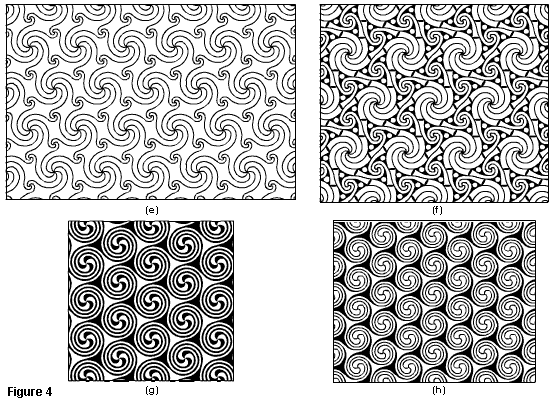page 2

The tiling shown in Figure 3c is very rarely used and examples of it are hard to find. The tilings shown in Figure 2b and Figure 5 may possibly be known and used but so far has not been found by the author. Figure 4 shows some Celtic styles applied to underlying tilings used extensively by traditional artisans. On the right b,d and f are constructed by substituting C-curves onto tilings with equiangular vertices. On the left a, c and e substitute S-curves on the same three tilings. The last two, g and h, are S-curves with Celtic styles applied to the same (3.3.3.3.3.3) tiling. The set of tiles made from the substitution of S-curves allows any composition. The set of tiles made from the substitution of C-curves alone significantly restricts the compositions possible[1]. Those with combinations of both S-curves and C-curves while not allowing any arrangement like the S-curve tiles alone can nevertheless be used to make a wide variety of compositions. Some of these can be seen in Figures 7-11[5].

